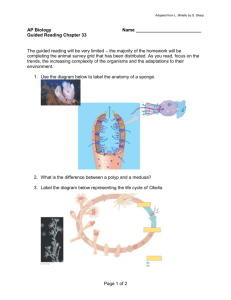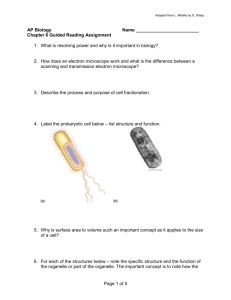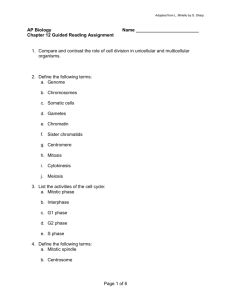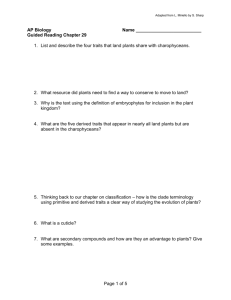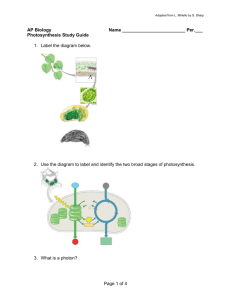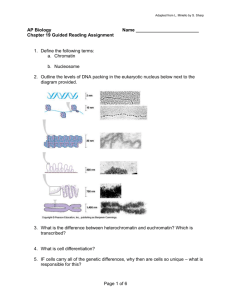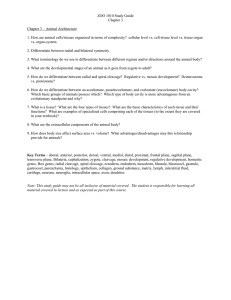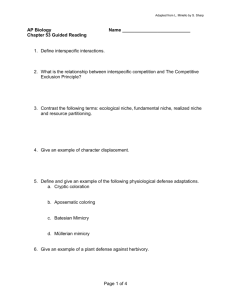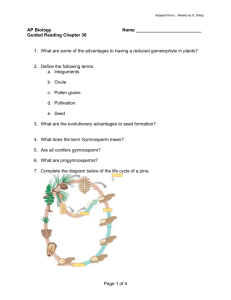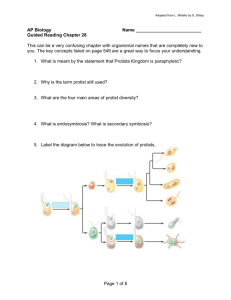Chapter 32 Guided Reading
advertisement
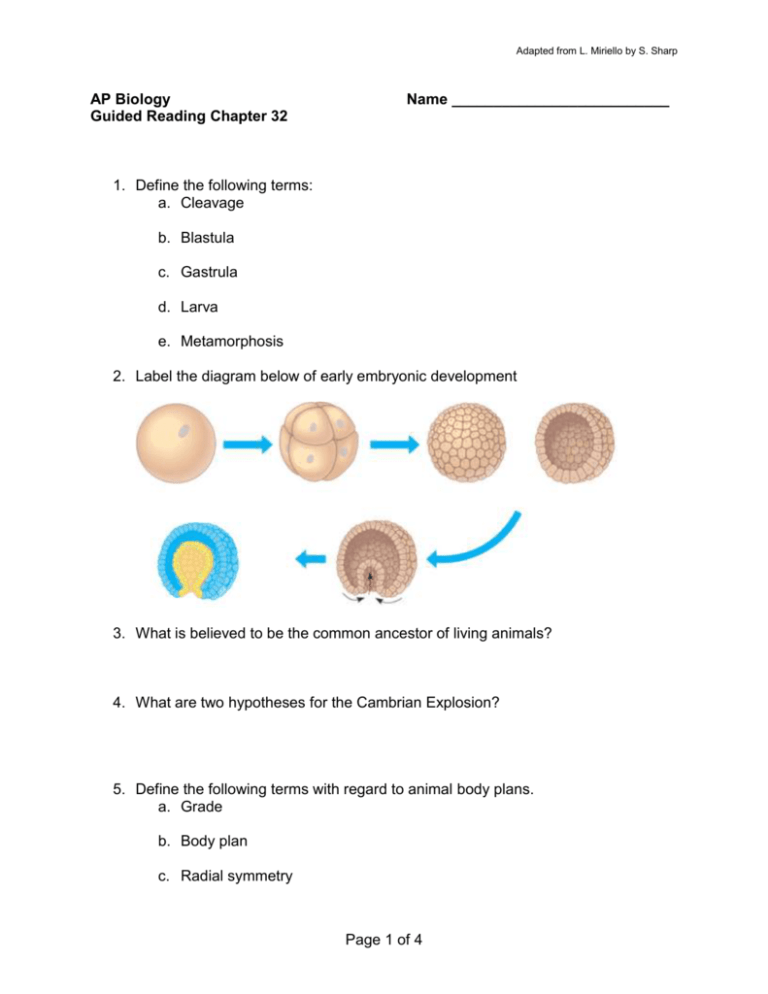
Adapted from L. Miriello by S. Sharp AP Biology Guided Reading Chapter 32 Name __________________________ 1. Define the following terms: a. Cleavage b. Blastula c. Gastrula d. Larva e. Metamorphosis 2. Label the diagram below of early embryonic development 3. What is believed to be the common ancestor of living animals? 4. What are two hypotheses for the Cambrian Explosion? 5. Define the following terms with regard to animal body plans. a. Grade b. Body plan c. Radial symmetry Page 1 of 4 Adapted from L. Miriello by S. Sharp d. Bilateral symmetry e. Dorsal f. Ventral g. Anterior h. Posterior i. Cephalization j. Germ layers k. Endoderm l. Ectoderm m. Archenteron n. Diploblastic o. Triploblastic p. Mesoderm q. Body cavity r. Coelom s. Pseudocoelomate t. Coelomate u. Acoelomate 6. Color and label the following diagram Page 2 of 4 Adapted from L. Miriello by S. Sharp 7. Use the unlabeled diagram to compare and contrast protostomes and deuterostomes development. 8. What is the difference between determinate cleavage, radial cleavage and indeterminate cleavage? Page 3 of 4 Adapted from L. Miriello by S. Sharp 9. What is the difference between schizocoelous and enterocoelous? 10. What are the 5 points of agreement on animal phylogeny? a. b. c. d. e. 11. Studying the two phylogenic trees on pages 634-635 – what is the basic disagreement – what does the molecular data tell us? Use the following vocabulary in your response: ecdysozoans, lophotrochozoans, lophophore and trochophore larva. Points will be deducted if you do not use all of these terms. Page 4 of 4
